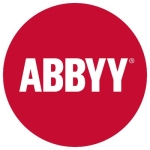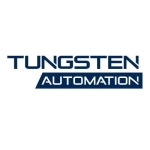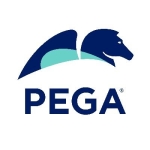What is our primary use case?
My use case for Automation Anywhere is for vendor, customer service automation for the organization to drive improved customer service that relates to business growth.
What is most valuable?
The best features in Automation Anywhere are that it is easy to use and easy to suggest, and it's a wonderful product because it is very handy and it makes life easy. It is definitely a tool to use in our development when it comes to our businesses, which is retail. The features that I appreciate in Automation Anywhere are that it automates and inputs AI, which we call artificial intelligence.
Automation Anywhere stands out because it has brought productivity to the organization, improved customer service, accelerated business growth, and allowed for faster innovation. When it comes to AI, it offers an AI process automation that empowers and drives productivity and faster innovation whenever it is incorporated with artificial intelligence.
Automation Anywhere has improved our organization in terms of customer service, and there is an improvement in customer service and faster innovation, especially when it comes to innovating the ways of doing business.
What needs improvement?
For people who don't have technical skills, Automation Anywhere may take time when it comes to browsing or loading time, and sometimes becomes very buggy with unwanted failures.
Automation Anywhere has room for improvement in cost because it's high, and it can be a drawback for small industries or organizations that are coming up. Also, adopting Robotic Process Automation looks high, so it can be improved; perhaps the cost could be adjusted to favor even the small industries that are coming up. The browsing loading time in Automation Anywhere should be addressed, which sometimes can bring unwanted failures.
For how long have I used the solution?
I have been using the solution for about two and a half years, three years.
What do I think about the stability of the solution?
The stability of Automation Anywhere is good, and I rate it eight or nine out of 10.
What do I think about the scalability of the solution?
Automation Anywhere is scalable. I would rate the scalability of Automation Anywhere an eight.
How are customer service and support?
I do use the Automation Co-pilot. Co-pilot makes work easier, and the time required to do work is really reduced, resulting in accomplishing more in just a few moments.
Co-pilot helps to increase productivity because whenever you use it, there's time saving and the energy that was supposed to be used for other things can be redirected to other tasks within the organization. In half a day or a few hours, Automation Anywhere saves me time, so as an organization, we are at least somewhere better in terms of productivity.
Regarding technical support, they are doing good work and work closely with customers to design solutions that align with organizational goals as well as improve efficiency. I give the support from Automation Anywhere a nine out of ten.
How would you rate customer service and support?
Which solution did I use previously and why did I switch?
We haven't really tried other products because Automation Anywhere was required when we began this organization, and when we first tried it, we saw it working better for us; thus, the integrity of it is good.
How was the initial setup?
Currently, in my organization, we have about four departments using Automation Anywhere. Automation Anywhere doesn't require any maintenance. I purchased Automation Anywhere through a direct purchase.
What about the implementation team?
The deployment of Automation Anywhere involves a support team that assists in deploying the product in our systems and makes the process automation easier while also helping other staff understand the product.
What was our ROI?
Automation Anywhere has improved our organization in terms of customer service, and there is improvement in customer service and faster innovation, especially when it comes to innovating the ways of doing business.
What's my experience with pricing, setup cost, and licensing?
Automation Anywhere has room for improvement in cost because it's high, and it can be a drawback for small industries or organizations that are coming up. Also, adopting Robotic Process Automation looks high, so it can be improved; perhaps the cost could be adjusted to favor even the small industries that are coming up.
Which other solutions did I evaluate?
We haven't really tried other products because Automation Anywhere was required when we began this organization, and when we first tried it, we saw it working better for us; thus, the integrity of it is good.
What other advice do I have?
The vendor can contact me if they have any questions about my review. I would be interested in being a reference for the vendor. I would recommend Automation Anywhere because it's easy to suggest and it's a good product. I would rate Automation Anywhere a nine out of 10 compared to other similar products.
The automation of workflows, APIs, applications, and documents in Automation Anywhere is good. I spend about half a day to a day on maintaining bots in Automation Anywhere. It is easy to upgrade Automation Anywhere, but when it comes to the costs incurred when upgrading the product, it can be a drawback; it sometimes takes time because we need the funds to upgrade the system. However, when it comes to upgrading, it is very easy.
Training a non-technical employee on Automation Anywhere will take a day or two days, depending on what you're trying to train them.
Disclosure: PeerSpot contacted the reviewer to collect the review and to validate authenticity. The reviewer was referred by the vendor, but the review is not subject to editing or approval by the vendor.





















